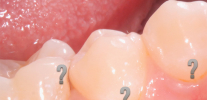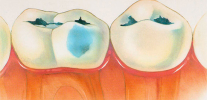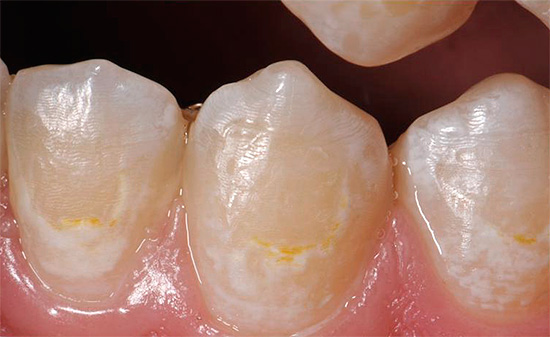
Most people firmly believe that the correct toothpaste, all sorts of improved toothbrushes, rinses, etc., reliably and almost guaranteed to protect them from caries. And often, when choosing hygiene products, serious mistakes are made or a reassessment of their capabilities occurs.
Enamel caries often develops contrary to these beliefs, and there are certain prerequisites for that ...
Provocative factors: microbial exposure
Usually enamel caries gradually forms under the thickness of plaque covering the tooth for a long time. In the layers of plaque, numerous microorganisms feed on carbohydrate residues.
A crucial role in the formation of carious spots on the tooth enamel is played by gram-positive bacteria - streptococci. In this case, the most important “destroyers” of the enamel mineral structure are anaerobic bacteria Streptococcus mutans. Due to the enzymatic processing of carbohydrates (for example, sugar) they form organic acids that wash mineral components from enamel (calcium, phosphorus and fluorine compounds).

It is interesting
Already in 1890, thanks to Professor V. Miller, people learned about the chemical-parasitic theory of caries through his long-term work “Microorganisms of the human oral cavity”. From this year begins the reading of a scientifically based approach to the problem of caries on teeth. It was Miller who first expressed the opinion that microorganisms and carbohydrates on the enamel surface create a favorable environment for the development of caries.
The formation of organic acids (lactic, malic, acetic, pyruvic, etc.) as a result of fermentation of food residues on the teeth allows the pH (acidity level) to drop to very low values. The doctor carried out his experiments on the removed teeth and obtained unique results for those times, proving the current chemical-parasitic theory of caries.
Elements of early diagnosis
In most cases, the patient cannot recognize the caries of the enamel in the early stages, since the clinic of this pathology is poorly expressed. When a white or pigmented spot appears, many blame it on plaque or tartar, not understanding the severity of the problem.
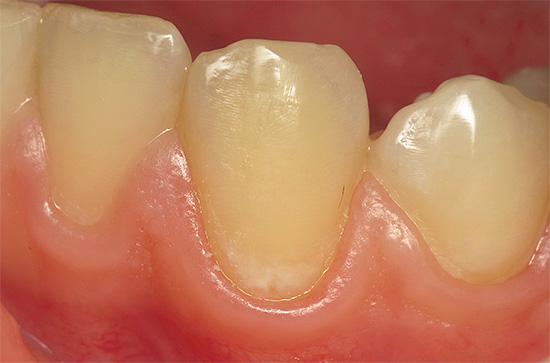
The color of the enamel affected may be different, depending on the characteristics of regularly taken food and the presence of certain dyes in it.
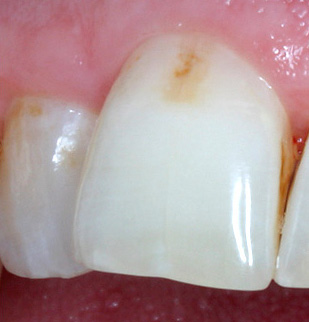
Only a dentist has the opportunity to carry out a complex of simple diagnostic measures aimed at establishing a hidden carious lesion. Already in the early stages of examining the teeth and probing them, you can determine the nature of the lesion:
- When identifying smooth areas of enamel on chalky-white and pigmented spots during the probe on its surface, it is difficult to immediately talk about the presence of caries. The second stage is important - staining of doubtful areas with special dyes (more on this later).
- The presence of a rough surface when maintaining a dental probe along the suspicious zone immediately identifies this phenomenon as a defect or initial “softening”. In other words, these are caries of enamel at the stage of surface destruction.
In the photo below, enamel caries is presented as the initial stage of the lesion with the characteristic signs of this particular stage:
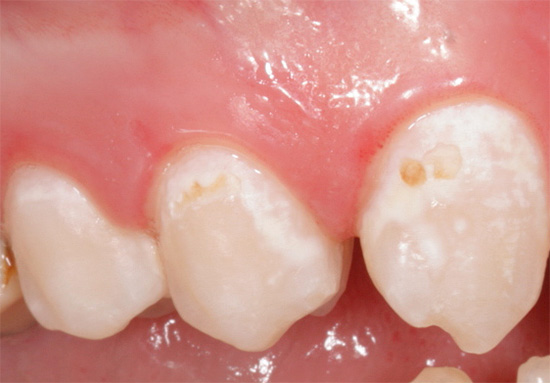
Opinion dentist
Most often you can watch hidden lesions of caries in fissure area.It is in these numerous grooves that plaque easily accumulates for a long time without brushes. In some cases, the probing of these pits immediately gives an answer whether there is a roughness, a hidden defect, or demineralization that has begun in the subsurface layers. Sometimes there may be short-term painful sensing from sensing, but treatment cannot be started without diagnosis.
Diagnosis of caries enamel using dyes
Professional use of a 2% solution of Methylene Blue is perhaps the fastest and easiest way to find out exactly what is in front of us: enamel caries or some kind of non-carious lesion (hypoplasia, fluorosis, pigmentation, etc.).
In case of a carious stain, the dye easily penetrates into the demineralized (porous) enamel, stably staining the entire area of the lesion. Sometimes other dye preparations are used for diagnostic caries enamel:
- 0.1% solution of methylene red;
- Carmine;
- Kongorot;
- Tropeolin;
- Silver nitrate solution.
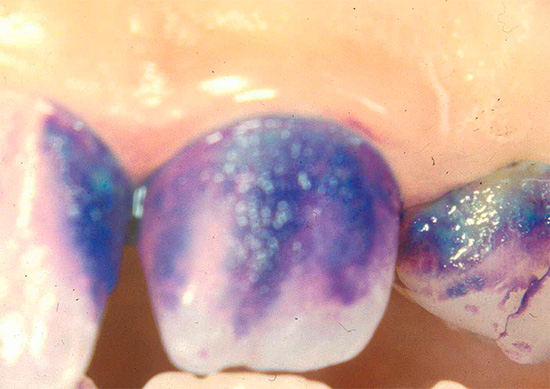
Fluorescent diagnostics of enamel caries is a rare diagnostic method that has not been widely used in dental clinics.It is based on the phenomena of fluorescence of healthy tooth tissues under the influence of ultraviolet rays.
Special lamps, for example, OLD, illuminate the teeth in a dark room at a distance of about 20 cm. At the same time, healthy enamel tissues give a light bluish or light green hue, and enamel-effected areas do not radiate it. The method is rather effective, but it has a high attachment to complex expensive equipment.
The clinical picture: the inaudibility of symptoms
The blade of caries enamel in most cases is not bright. The patchy forms of caries may not cause any painful reactions from irritants at all, only in exceptional cases is discomfort and a sense of “oskomin” possible when carious lesions are located in the region of the sensitive necks of the teeth.
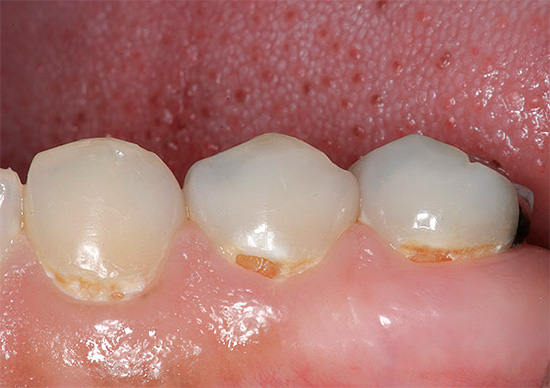
Since enamel caries is, besides stains, superficial disturbances in the enamel passages, in some cases certain symptoms are associated with this:
- Reaction to temperature effects (cold, hot);
- Reaction to mechanical stimuli (when taking a hard meal);
- Reaction to chemical factors (sweet, salty, sour).
In most cases, all these symptoms are mild and quickly subside when the cause is eliminated.
The defeat of enamel caries contact surfaces in the dental gaps - this is the most insidious version of the development of pathology. Due to the long-term latent occurrence of the destructive process in the gap between the teeth, there is a possibility of late detection of the lesion and its transition to the stage of caries of dentin, a more serious form of the pathological process.
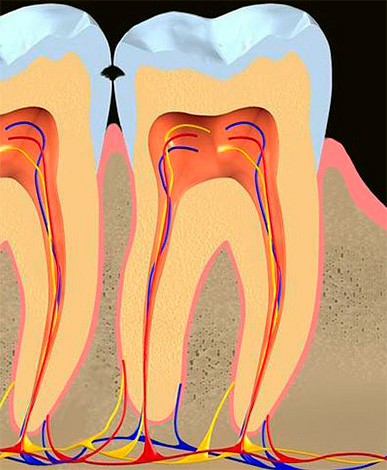

The enamel caries clinic can also manifest itself in the aesthetic imperfection of the tooth (or teeth), causing a certain psychological discomfort to the person.
Feedback
In the last month of pregnancy, my dentist suddenly found a white border around my gum on almost every front tooth. I noticed this a month ago, it began to worry me a lot, because even it became impossible to smile normally. The doctor said that I have caries in the staining stage and that he himself will not pass: either treatment with fluoride-containing agents is necessary, or already drilling a tooth, but this depends on what will be observed after the first option. I somehow do not really want to go with two-color teeth, I do not know now how to be. I want to try the option with fluorine, there you just need to varnish enamel.The dentist also said that quickly getting a normal color will not work, and that the course of fluoridation will last more than one visit. I'll save my teeth.
The relevance of the treatment of caries enamel without a drill
The general rules in the treatment of enamel caries include:
- Careful oral hygiene using fluoride-containing pastes;
- Compliance with the diet;
- Remineralizing therapy;
- The use of sealants;
- The use of special preparations of fluorine;
- Dissection of the tooth with the subsequent production of fillings.
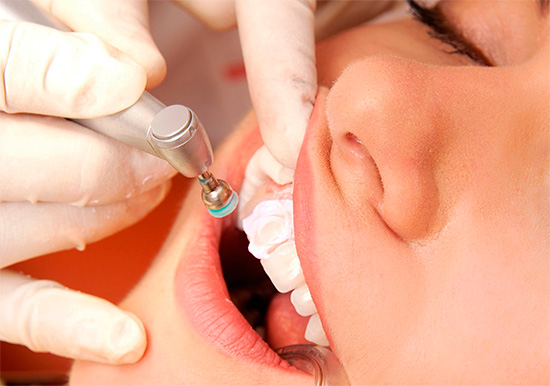
From this list it is necessary to select everything, except the last item, which is characteristic for the violation of the integrity of enamel with the formation of roughness or a small cavity. Here the preparation of the drill is inevitable.
If the caries is in the staining stage, remineralization therapy can be applied with gels, fluoride varnishes, sodium fluoride solutions, etc.
To speed up the restoration of the structure of the enamel, dentists also use Enamel-sealing liquid, which consists of two liquids. When they are applied to the enamel one by one, the pores are filled with crystals of fluorine-containing compounds of calcium, magnesium and copper.They remain in the pores from 4-6 months to 2 years, constantly releasing fluoride ions.
Treatment of caries in the staining stage at home
Before treatment initial caries It is important to consult with a dentist, as home methods can delay professional help in time, which can potentially lead to the development of the next stage of carious lesion. The preferred option - when therapy at home is used as an auxiliary - to enhance the effect of treatment of enamel caries, for example, in the clinic.
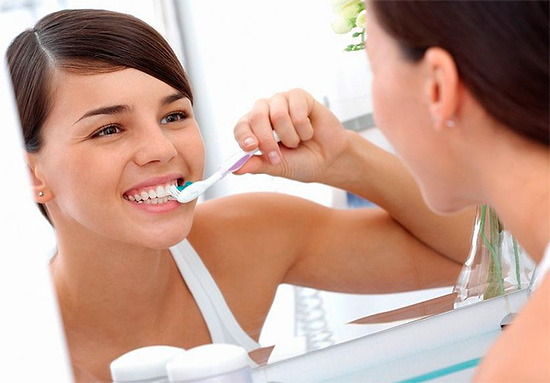
So, self-treatment of caries in the staining stage is possible only after consulting a dentist and with his permission. Usually these are small areas of enamel demineralization, the treatment of which does not cause difficulties.
We mention some common tools that can be used in this case.
Tooth gels, ensuring the restoration of enamel:
- Tooth Mousse - gel of milk casein extract, composed of calcium and phosphorus compounds;
- R.O.C.S. Medical Minerals is a special remineralizing gel containing magnesium, calcium and fluorine. Being applied to the teeth, these components restore the mineral structure of the enamel.
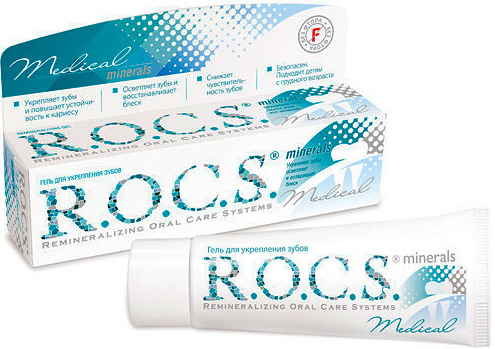
Separately, you can select fluorine-containing pastes with a high content of fluorides, which also provide a good regenerating effect on enamel caries:
- Elmex - fluoride pasta-gel for cleaning teeth, characterized by a high content of fluoride (1400 ppm). It has a fixing effect if used after remineralizing gels.

- President Classic is a therapeutic fluoride-containing paste (1400 ppm fluorine content) with an anti-inflammatory effect aimed at reducing bleeding gums (2 in 1).
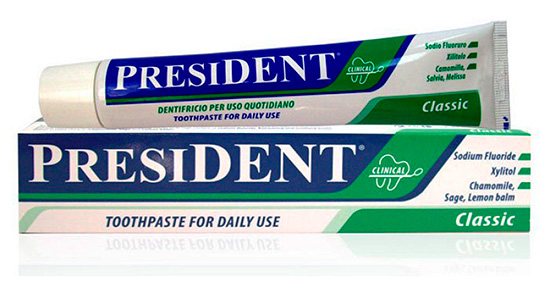
The importance of preventive measures
Generally speaking, for the occurrence of caries, it is enough to have only 2 factors in the oral cavity: the presence of carbohydrate residues and the presence of a large number of cariogenic bacteria. When forming plaque and tartar on the surface of the teeth, enamel caries is almost inevitable.

It is important to understand that proper oral hygiene, and limiting the consumption of easily fermentable carbohydrates can reduce the risk of caries enamel by 3-5 times or more.
Here are some simple ways to prevent the destruction of tooth enamel:
- Regular brushing your teeth at least 3 times a day.Standard and clear to any method of cleaning teeth provides for the cleaning of all surfaces with brushes and floss (dental floss). It is best to use toothpastes containing fluoride, and floss - also impregnated with fluorine-containing compounds. No less important is to brush your teeth only after eating, and not before, as previously thought.
- The use of fluorine-containing rinses strengthens the enamel and prevents the destructive action of organic acids secreted by bacteria. Antiseptic substances contained in these rinses, reduce the number of bacteria themselves.
- Restriction of snacks between main meals. This is an important point, as its non-observance and the frequent use of food during the day, especially the sweet, delays the self-cleaning of the teeth for a long period. And this is enough for the development of caries of enamel.
- Visit the dentist 1 time in 6 months for the purpose of routine inspection or professional oral hygiene: removing plaque and stone from all surfaces of the teeth (especially in between) and, if necessary, deep enamel fluoridation with special gels.
Keep your teeth and stay healthy!
How can caries be cured without using a dental drill, that is, without drilling teeth
Interesting facts about caries and other problems with teeth


